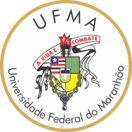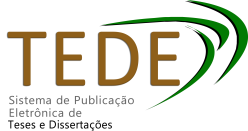| Compartilhamento |


|
Use este identificador para citar ou linkar para este item:
https://tedebc.ufma.br/jspui/handle/tede/5718Registro completo de metadados
| Campo DC | Valor | Idioma |
|---|---|---|
| dc.creator | SANTOS, Paula Maria de Almeida | - |
| dc.creator.Lattes | http://lattes.cnpq.br/8198133832863243 | por |
| dc.contributor.advisor1 | COSTA, Hawbertt Rocha | - |
| dc.contributor.advisor1Lattes | http://lattes.cnpq.br/0062249238399290 | por |
| dc.contributor.referee1 | COSTA, Hawbertt Rocha | - |
| dc.contributor.referee1Lattes | http://lattes.cnpq.br/0062249238399290 | por |
| dc.contributor.referee2 | CRUZ, Dulce Márcia | - |
| dc.contributor.referee2Lattes | http://lattes.cnpq.br/1543348404865052 | por |
| dc.contributor.referee3 | GUERINI, Silvete Coradi | - |
| dc.contributor.referee3Lattes | http://lattes.cnpq.br/0527275499843168 | por |
| dc.date.accessioned | 2024-12-04T17:46:27Z | - |
| dc.date.issued | 2024-07-11 | - |
| dc.identifier.citation | SANTOS, Paula Maria de Almeida. A Gamificação educacional como estratégia no Ensino de Química em uma perspectiva sociocultural. 2024. 130 f. Dissertação(Programa de Pós-graduação em Ensino de Ciências e Matemática/CCET) - Universidade Federal do Maranhão, São Luís, 2024. | por |
| dc.identifier.uri | https://tedebc.ufma.br/jspui/handle/tede/5718 | - |
| dc.description.resumo | No cenário do Ensino de Química, estratégias pedagógicas vêm sendo propostas a partir de atividades diversificadas, como as denominadas metodologias ativas de aprendizagem. Entre estas, enfatizamos a gamificação educacional, que baseia-se na utilização de elementos de games para engajar e motivar a resolução de problemas por meio da interação entre pessoas, tecnologia e o meio. Esta pesquisa norteia-se a partir do seguinte problema: De que forma a implementação da gamificação educacional pode contribuir para a motivação e engajamento dos alunos na disciplina de química? Para responder essa pergunta, centramos o objetivo geral desta pesquisa em investigar como o planejamento e desenvolvimento de uma estratégia gamificada pautada na perspectiva sociocultural da Teoria da Ação Mediada (TAM) pode contribuir para a motivação e engajamento dos alunos no ensino e aprendizagem de química no Ensino Médio. Consideramos como suporte teórico-metodológico a Design Based Research (DBR) e adotamos o referencial da TAM de Wertsch (1998) para a construção da sequência didática (SD) gamificada. Nesse panorama, esta pesquisa tem natureza qualitativa e abordagem do tipo estudo de caso. Teve como participantes, a professora regente da disciplina de química e 25 alunos de uma turma de 1º ano do Ensino Médio de uma escola pública no estado do Maranhão. Como instrumentos de produção de dados, utilizamos os planos de aula da docente, entrevistas, questionários, observação participante e registros em diário de campo. Foram delimitadas as seguintes categorias de análise dos dados: Concepções prévias dos participantes, Experiência no processo e Princípios de design. Os resultados evidenciaram que a incorporação de elementos do design de games, tais como regras claras e feedbacks imediatos, integração de narrativa com avatares e tabela de classificação (ranking e pontos) sobressaíram-se e forneceram fluxo ao sistema gamificado. Além disso, a realização de desafios em equipes mediados por tecnologias digitais, tanto de forma competitiva quanto colaborativa, e as problematizações em torno dos conceitos científicos contribuíram em direção aos aspectos motivacionais e à manutenção do engajamento dos estudantes. No entanto, verificamos algumas limitações para sua implementação, relacionadas à redução da carga horária da disciplina de química na nova estrutura curricular do Ensino Médio e às condições de infraestrutura na escola. Nessa perspectiva, tanto os alunos como a professora regente relataram posicionamentos positivos em relação a utilização dessa metodologia, sendo bem recepcionada na escola. | por |
| dc.description.abstract | In the Chemistry Teaching scenario, pedagogical strategies have been proposed based on diverse activities, such as the so-called active learning methodologies. Among these, we emphasize educational gamification, which is based on the use of game elements to engage and motivate problem solving through interaction between people, technology and the environment. This research is guided by the following problem: How can the implementation of educational gamification contribute to the motivation and engagement of students in the chemistry subject? To answer this question, we focus the general objective of this research on investigating how the planning and development of a gamified strategy based on the sociocultural perspective of the Theory of Mediated Action (TAM) can contribute to the motivation and engagement of students in the teaching and learning of chemistry in the High school. We considered Design Based Research (DBR) as theoretical-methodological support and adopted Wertsch's (1998) TAM framework for the construction of the gamified didactic sequence (SD). In this context, this research has a qualitative nature and a case study approach. The participants were the chemistry teacher and 25 students from a 1st year high school class at a public school in the state of Maranhão. As data production instruments, we used the teacher's lesson plans, interviews, questionnaires, participant observation and field diary records. The following data analysis categories were delimited: Participants' previous conceptions, Experience in the process and Design principles. The results showed that the incorporation of game design elements, such as clear rules and immediate feedback, integration of narrative with avatars and leaderboard (ranking and points) stood out and provided flow to the gamified system. Furthermore, carrying out team challenges mediated by digital technologies, both competitively and collaboratively, and the problematizations around scientific concepts contributed towards motivational aspects and maintaining student engagement. However, we found some limitations to its implementation, related to the reduction in the workload of the chemistry subject in the new High School curricular structure and the infrastructure conditions at the school. From this perspective, both the students and the teacher reported positive views regarding the use of this methodology, which was well received at the school. | eng |
| dc.description.provenance | Submitted by Maria Aparecida (cidazen@gmail.com) on 2024-12-04T17:46:27Z No. of bitstreams: 1 PAULA MARIA DE ALMEIDA SANTOS.pdf: 2828121 bytes, checksum: 665897f9441965af45d8cf95738fbe5e (MD5) | eng |
| dc.description.provenance | Made available in DSpace on 2024-12-04T17:46:27Z (GMT). No. of bitstreams: 1 PAULA MARIA DE ALMEIDA SANTOS.pdf: 2828121 bytes, checksum: 665897f9441965af45d8cf95738fbe5e (MD5) Previous issue date: 2024-07-11 | eng |
| dc.format | application/pdf | * |
| dc.language | por | por |
| dc.publisher | Universidade Federal do Maranhão | por |
| dc.publisher.department | COORDENAÇÃO DO CURSO DE CIÊNCIAS NATURAIS-BIOLOGIA/CAMPUS III | por |
| dc.publisher.country | Brasil | por |
| dc.publisher.initials | UFMA | por |
| dc.publisher.program | PROGRAMA DE PÓS-GRADUAÇÃO EM ENSINO DE CIÊNCIAS E MATEMÁTICA/CCET | por |
| dc.rights | Acesso Aberto | por |
| dc.subject | Design Based Research; | por |
| dc.subject | Ensino de química; | por |
| dc.subject | Gamificação; | por |
| dc.subject | Teoria da Ação Mediada | por |
| dc.subject | Design Based Research; | eng |
| dc.subject | Chemistry Teaching; | eng |
| dc.subject | Gamification | eng |
| dc.subject | Theory of Mediated Action | eng |
| dc.subject.cnpq | Métodos e Técnicas de Ensino | por |
| dc.title | A Gamificação educacional como estratégia no Ensino de Química em uma perspectiva sociocultural | por |
| dc.title.alternative | Educational Gamification as a Strategy in Chemistry Teaching from a Sociocultural Perspective | eng |
| dc.type | Dissertação | por |
| Aparece nas coleções: | DISSERTAÇÃO DE MESTRADO - PROGRAMA DE PÓS-GRADUAÇÃO EM ENSINO DE CIÊNCIAS E MATEMÁTICA/CCET | |
Arquivos associados a este item:
| Arquivo | Descrição | Tamanho | Formato | |
|---|---|---|---|---|
| PAULA MARIA DE ALMEIDA SANTOS.pdf | Dissertação de Mestrado | 2,76 MB | Adobe PDF | Baixar/Abrir Pré-Visualizar |
Os itens no repositório estão protegidos por copyright, com todos os direitos reservados, salvo quando é indicado o contrário.




